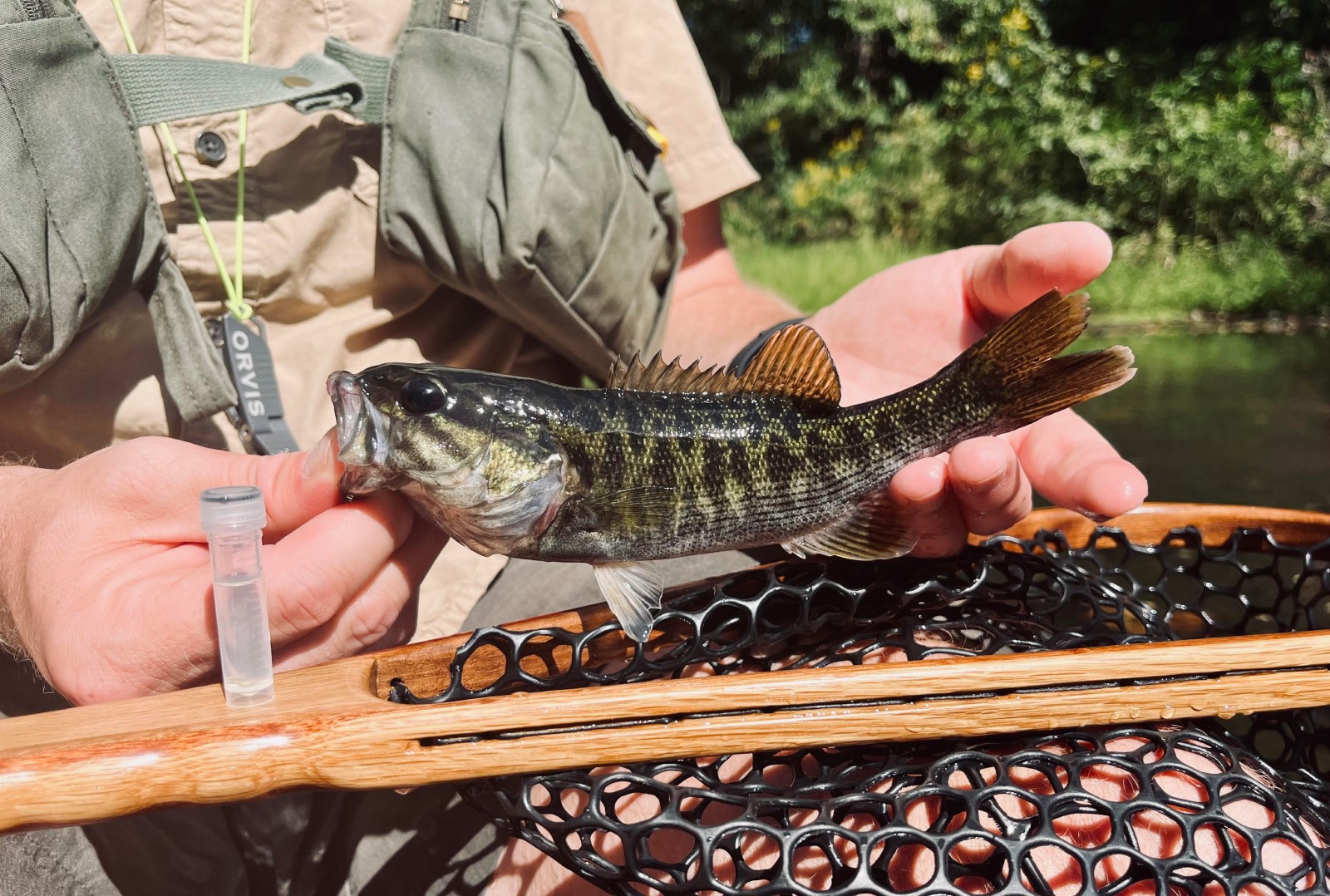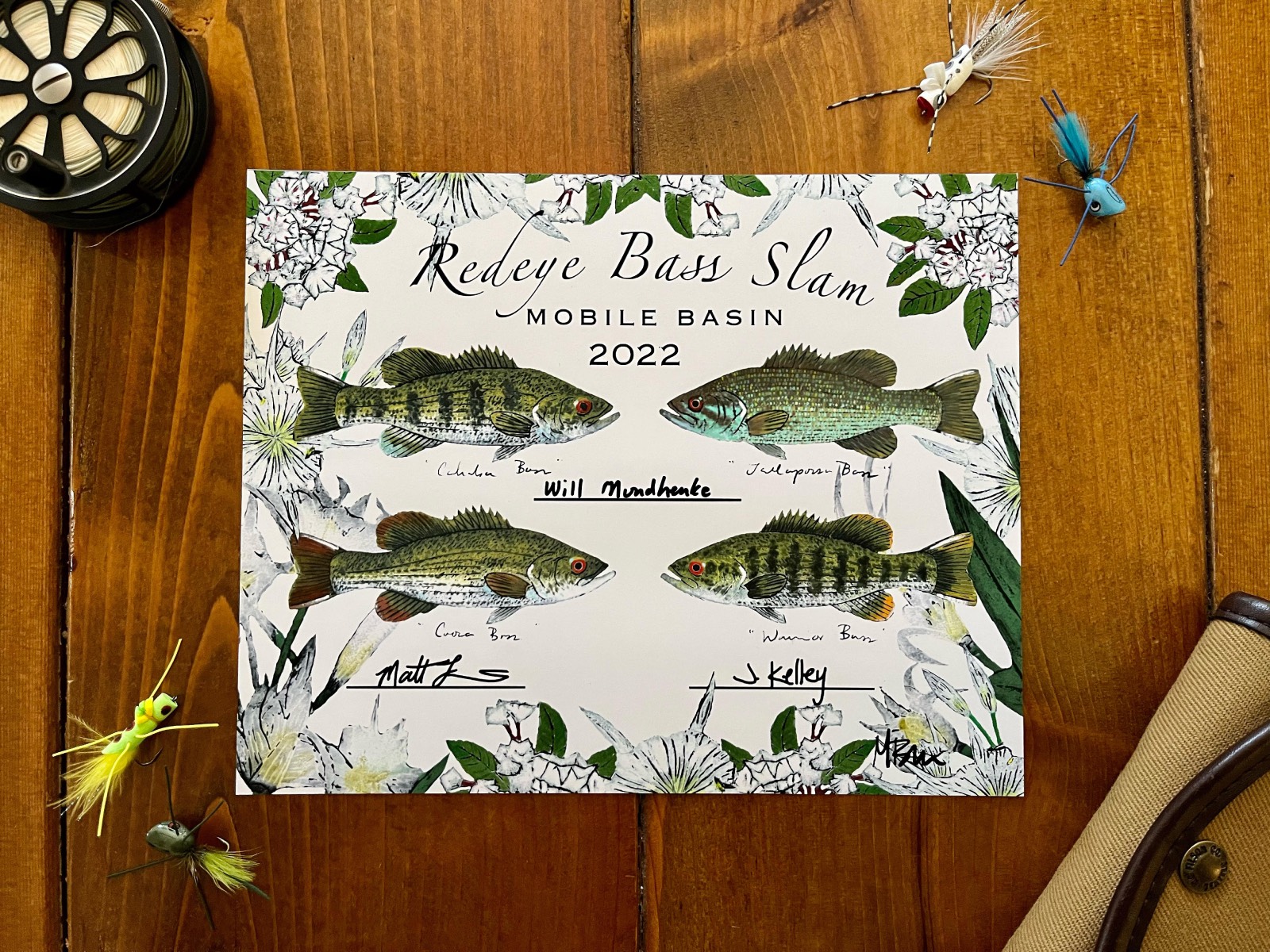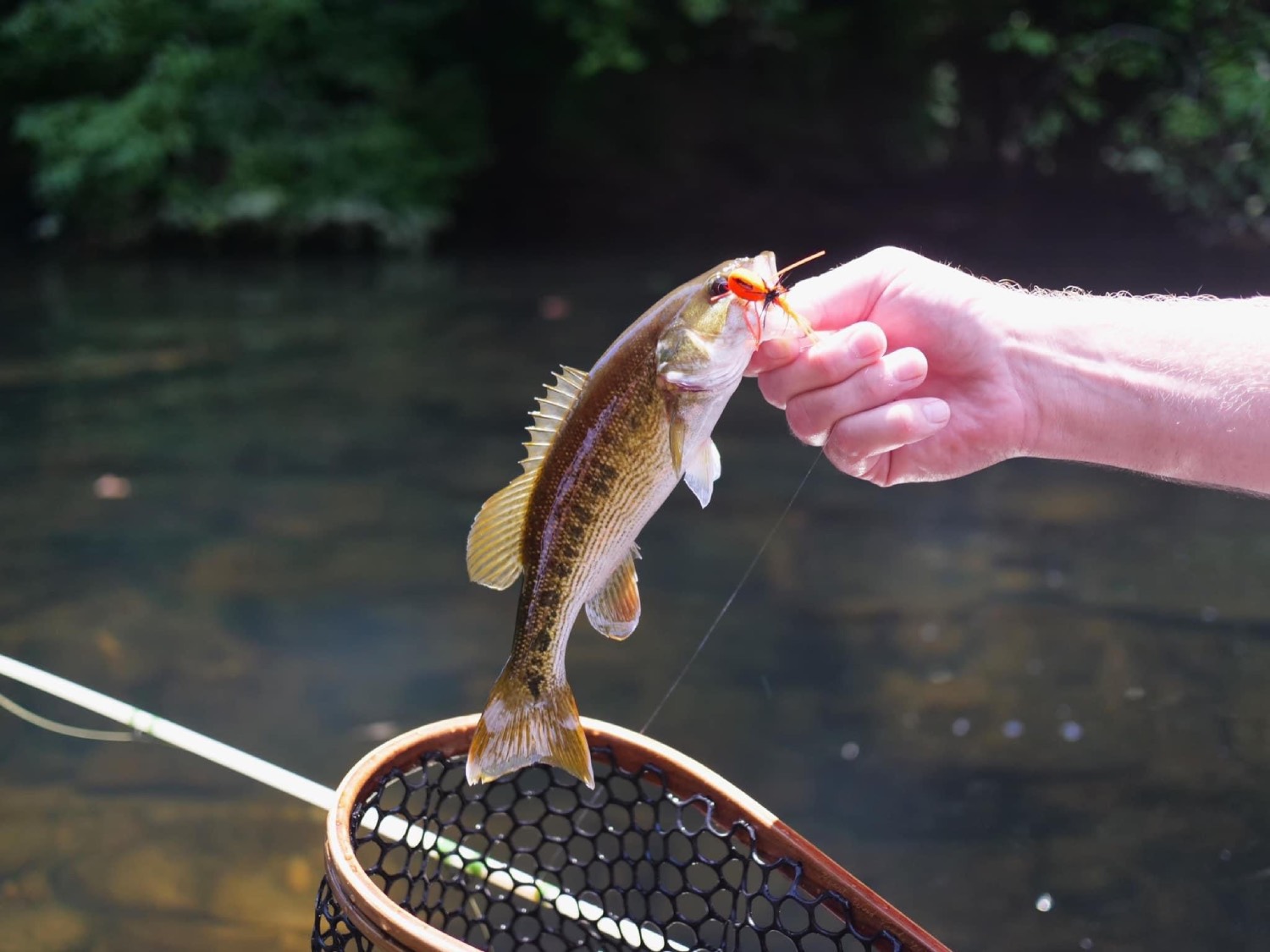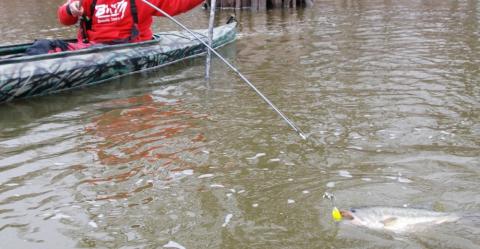Will Garrett Mundhenke
The Redeye Bass is valuable on its own merit. This bass is one of the last remaining game fish that has survived entirely on its own without hatchery support and despite the rapid land development around its home waters. It has an intrinsic value as a native bass that swims in our southern waters. As Gamekeepers, we have a responsibility as fishermen and fisherwomen to be good stewards to the Redeye Bass. A small band of passionate anglers turned citizen scientists have rallied around this fish to ensure its survival into the future. Groups such as the Native Fish Coalition, Riverkeepers, and state agencies have dived head first into protecting this bass. They can all readily use your support.
All seven species of the Redeye Bass face threats both natural and created. Industrialization and land development in its native range has caused increased sedimentation. Bank erosion and overfertilization from landscaping runoff threatens the water quality on its streams. Driving four wheelers through its creeks permanently alters its home habitat. Illegally introduced fish have created a rash of hybridization that threatens to mute and wash out all of the unique diversity that makes our southern fisheries so special. These threats along with your typical litter and water pollution makes the sustaining of Redeye Bass an uphill battle.
Fortunately, this bass is no longer overlooked and groups from Universities to volunteer conservationists have started research projects on their behalf. Fin clippings have been taken across its native range to map and find remaining pure populations. Stream analysis is being done to discover what natural barriers, such as waterfalls and dams, prevent invasive species from moving upstream thereby protecting Redeye Bass. Education and signage campaigns are underway to inform anglers of the incredible but underrepresented fish that swim in the waters they fish. The future of the Redeye Bass is bright but not guaranteed.
What can we as Gamekeepers do to protect our native fish? The Redeye Bass is not alone. From coast to coast various native fish like darters and daces face similar threats. The most important first step is to never move fish from one body of water to another. Transporting fish – commonly known as bucket biology – has dramatic impacts on native ecosystems and permanently alters a stream. It is also highly illegal. Introduced fish known as invasive fish outcompete native species for resources and hybridize them to the point of losing genetic diversity. The second step we can accomplish is by maintaining riparian buffer zones with native plants and trees along our properties’ stream banks. These buffer zones help prevent bank erosion and sedimentation that covers up natural substrate that our native fish rely on to spawn. An added bonus is the shade that bank trees provide offers cool reprieves from the intense summer heat in small creeks where hotter water means less dissolved oxygen. Additionally, taking our four wheelers through creeks and rivers might seem like harmless fun, but it actually damages and alters native fish habitat. You may accidentally run right over a fish’s spawning area and reduce the yield for that year. Finally, never litter or dispose of fluids improperly. Almost everything drains into the closest waterbody eventually and pollutes all of our waters. Protecting our native fish is a matter of protecting our shared heritage and resources. Being a Gamekeeper extends above and below the water's surface.

This Bartram’s Bass was fin clipped in order to test for genetic purity in South Carolina.
Bass Slams and Challenges
The best way to start appreciating and understanding the value of our native fish is by experiencing them firsthand. One of the most exciting ways to fish for Redeye Bass is while embarking on a challenge alongside the angling experience. The first official Redeye Slam was started by a small but passionate group of Alabama anglers in 2018. The original Redeye Slam challenges anglers to catch all seven species: The Cahaba Bass, Coosa Bass, Warrior Bass, Tallapoosa Bass, Chattahoochee Bass, Altamaha Bass, and the Bartram’s Bass. There is an abbreviated version known as the Mobile Basin Slam which includes only the Cahaba Bass, Coosa Bass, Tallapoosa Bass, and Warrior Bass.
State agencies in Georgia and South Carolina have adopted Bass Slams as well in an effort to celebrate the diversity of black bass in their states. In South Carolina, an angler needs to catch the Bartram’s Bass, Smallmouth Bass, Largemouth Bass, and Spotted Bass to successfully win a certificate, stickers, and unique patch that changes each year. In Georgia, an angler needs to catch five of the available ten black bass to win their award. The purpose of these slams extend far beyond the simple goal of winning a prize. Rather, their mission is to educate anglers in the incredible resources available to pursue with a rod and reel. To experience this native bass is to understand and respect their intrinsic value and ensure their survival for future generations.
Redeye Bass should always be handled with care when brought to the net. Given that they are not supported by stocking programs, catch and release is imperative. Proper fish handling includes keeping the bass wet for as long as possible. When handling the fish, wet your hands so you do not remove their protective coating, which could expose them to harmful bacteria. Avoid common mistakes such as placing your catch on a rock, dry ground, grass, or boat deck for a photo. A wet hand or rubber net is a better choice for capturing a memory.

The Mobile Basin Slam Certificate with art provided by Mary Beth Meeks of Alabama.
Helpful Resources and Links
There is only one book dedicated to fly fishing for Redeye Bass, and it is written by a good friend in Dr. Matthew Robert Lewis. In his book, Fly Fishing for Redeye Bass: An Adventure Across Southern Waters, he does a stellar job of outlining the background of each of the seven species of Redeye Bass as well as their rivers, the historical underlining of those rivers, and the threat each fish faces. This is a must own piece of any serious Redeye angler’s library and a book that should be in every sportsman’s book collection. A geneticist by training, Matt begins with the uniqueness of each bass from their genetic code to the waters they call home. He is largely responsible for fostering the earliest movements that created the Redeye Bass fishing community across the South.
South Carolina Department of Natural Resources (SCDNR) and the Georgia Department of Natural Resources (GADNR) each have blogs dedicated to the Redeye Bass and how to catch them in their respective states. Information on each can be found in the links below.
Fly Fishing for Redeye Bass: An Adventure Across Southern Waters by Dr. Matthew Lewis
South Carolina Black Bass Slam
SCDNR Black Bass Slam: The Redeye (Bartram’s) Bass

The author’s Warrior Bass that completed the 2022 Mobile Basin Slam. Photo Courtesy of Steven Scoggins.






























